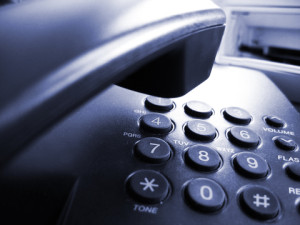 This article was originally written during the Fukushima Daiichi nuclear crisis in March 2011. The site where the article was originally published has been shut down (think it got hacked into). However, I still think it's a great article that adds perspective on the issue of nuclear energy. Enjoy.
This article was originally written during the Fukushima Daiichi nuclear crisis in March 2011. The site where the article was originally published has been shut down (think it got hacked into). However, I still think it's a great article that adds perspective on the issue of nuclear energy. Enjoy.
As Japan works around the clock to resolve the Fukushima Daiichi nuclear plant crisis, the fear has set in on this side of the ocean about the potential consequences of the radiation fallout. The United States has put a ban on Japanese food imports, and traces of radiation have been found in several states. Although we are exposed to trace amounts of radiation every single day from the sun, cellphones, microwaves, and computer screens, there’s still debate about the scale of the impact of the Japanese crisis on the United States. Nancy Grace and meteorologist Bernie Rayno already had their fight on the issue. Before anyone else gets irrational about the crisis in Japan, let’s consider seven other past and present nuclear scares and how they compare to this one.
Chernobyl
It’s an obvious one, but one that needs mentioning nonetheless. Pundits and news organizations have been comparing what happened in Chernobyl with what happened in Japan, although some disagree that a comparison could be made at all. This 1986 nuclear accident in Ukraine is considered the worst in history, killing 31 people and hurting countless more through the radiation fallout that still lingers today. The resettlement of people who lived in areas affected by the disaster is still going on today.
Don’t melt down without a Meltdown 101
Iran’s Nuclear Program
The country has been pursuing nuclear technology since the 1950s, and to this day the United States will do just about anything to keep a nuclear weapon out of Iran’s hands. Iranian leadership has claimed over and over again that they only seek nuclear technology for peaceful purposes, but the Western world, and Israel, still does not trust the Middle Eastern powerhouse. The country completed its first nuclear power plant in August 2010 as the United Nations Security Council remains uncertain of the true purpose of Iran’s nuclear efforts.
Nuclear power from around the world
Cuban Missile Crisis
The 1962 14-day crisis was as close as anyone can get to a nuclear crisis without any explosions. It was the closest the world had ever come to nuclear war as the Soviet Union placed missiles within striking range of the United States. Fidel Castro allowed the missiles to be placed in Cuba, since he feared a second attack against the country ever since the failed Bay of Pigs invasion the previous year. Once the United States got definitive evidence that Soviet missiles were located in Cuba and pointed directly at the US, President John F. Kennedy and Soviet leader Nikita Khrushchev made a compromise. Khrushchev agreed to remove the missiles if Kennedy publicly announced that the US would not invade Cuba again. The announcement was made, the missiles were removed, and the US also withdrew their missiles out of Turkey.
A timeline of the whole crisis
North Korea
North Korea certainly doesn’t have the strongest nuclear arsenal in the world, but the country’s ambitions with nuclear technology are what have the world powers on edge. Negotiations have stalled since 2009, when North Korea pulled out of the six-party talks and conducted its second nuclear test. The two Korea’s are still technically at war, since no peace treaty has been signed for the 1950-53 conflict, and the border is one of the most militarized zones in the world. If North Korea does become a nuclear power, it could lead to an arms race in East Asia and put the region into a very delicate situation.
North Korea suggests Libya should have kept nuclear program
Bikini Atoll
This little Marshallese Island was the site of 23 nuclear tests between 1946 and 1958. It is also the home of the first hydrogen test bomb, which turned out to be much more powerful than expected and created widespread contamination. The hydrogen test bomb of 1954 became the inspiration for the movie Godzilla, as 23 members of a Japanese fishing boat were part of that widespread contamination.
Bikini Atoll was originally deemed safe for settlement back in 1968, but islanders had to be removed again after further tests were conducted. Bikini Atoll also shares its namesake with the bikini swimsuit.
Over 50 years later, is the island safe for resettlement now?
India-Pakistan
It doesn’t help that the two countries haven’t been friendly for 60-plus years, but the feud over Kashmir has put India and Pakistan in a bit of a threshold. Both are nuclear capable, as each conducted a successful nuclear test in the late 90s and each are including nuclear warheads in its military arsenal. The chance of the two countries going to war in the near future is unlikely, but it’s a part of the world to keep an eye on anyway.
Even Obama can miss the tension
Three Mile Island
The one nuclear crisis to happen on American soil, the power plant in Pennsylvania suffered a partial core nuclear meltdown in 1979. Several studies in the years afterward found that the accident had almost no effect on cancer cases and other health consequences. The accident was caused by human errors and design flaws, and experts has warned of the possibility of an accident prior to the incident.
Coincidentally, the accident occurred twelve days after the release of The China Syndrome, a movie starring Jane Fonda and Michael Douglas about an accident at a nuclear reactor. The Three Mile Island power plant remains in operation to this day, though not to the capacity it had back in 1979.









